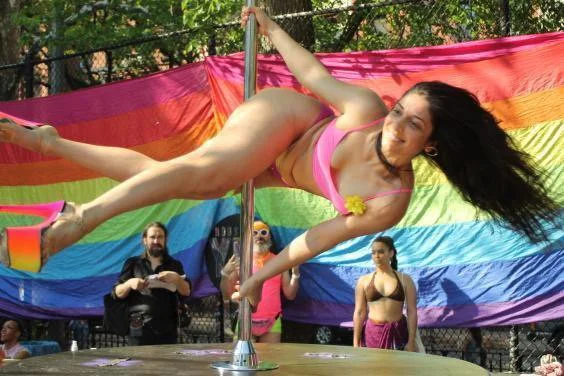What did you want to understand in greater detail?
I wanted to learn more about CPTSD (Complex Post Traumatic Stress Disorder) and its effects on the body, specifically the breath.
Why did you want to understand it in greater detail?
I became very fascinated with the optimal type of breath for movement, as well as the relationship between the diaphragm and the pelvic floor since we touched on breathing during one of our Invert Ready lectures. I also wanted to understand how Trauma affects breath.
Where did you go looking?
Please refer to my Bibliography below.
What did you learn?
Much of the present research points to yoga as being one tool for healing trauma and feeling safe in the body again.
Many people affected by trauma live in a continuous state of survival (the sympathetic nervous system) and don’t inhabit their bodies, going through life in a state of numbness and disconnection. Those in constant survival mode have a challenging time accessing the parasympathetic nervous system (rest and digest). Trauma survivors also have a low tolerance to discomfort. Avoiding behaviours aid in short-circuiting feedback when their own body’s sensations become unbearable. This engrained response cut’s a person off from their own emotions requiring more stimulation to produce a sense of aliveness and control. Trauma survivors are in need of help regulating their arousal, controlling their own physiology, and rewiring associations with the world and that is where yoga and breath come in.
A huge part of yoga is about holding positions for a sustained period of time and noticing and/or controlling the breath, much like meditation. It is a practice where there is a contained space and period of time where the practitioner maintains an uncomfortable position and uses the breath as an anchor of focus, maintaining the pose. Simply put, this teaches a person to be comfortable with the uncomfortable. Mindful approaches to teaching pole dance, like the Invert Ready approach, are very similar to Yoga in this way.
Breath has a strong relationship with the nervous system. Heart rate variability (HRV) measures the balance between the sympathetic nervous system (SNS) and the parasympathetic nervous system (PNS). When we inhale, we stimulate the SNS and our heart rate goes up. Exhalations stimulate the PNS, which slows down our heart rate. In healthy bodies, inhales and exhales produce steady fluctuations in heart rate. A good HRV is a measure of well-being and of how well we deal with stress in our bodies.
A person with CPTSD typically has rapid and shallow breath. Heart rate is slow and out of sync with the breath. This pattern is usual for a person shut down from chronic PTSD.
To improve this relationship is to improve a person’s HRV, well-being and relationship with the world.
What would you like your reader to know/understand?
Learning to control our breathing patterns and improving our awareness of our body during the breath can help regulate our nervous system.
What conclusions have you formed?
Yoga and intentional movement along with body and breath awareness are key to improving HRV as well as regulating the nervous system. Coming back to the body and feeling safe to do so may be a process but a worthwhile one for healing from CPTSD and improving quality of life. And I think this stems from the quality of breath and that is something we do have control over.
How is this impacting how you move and teach?
From this research, I am deeply understanding the importance of the quality of our breath. I will train and teach placing more intention and priority on the breath and ways to optimize movement with the breath.
Bibliography
➢ Wieler, Myrthe. “Fight or Flight versus Rest and Digest.” Ekhart Yoga, 19 Apr. 2021, https://www.ekhartyoga.com/articles/wellbeing/fight-or-flight-versus-rest-and-digest
➢ A., Van der Kolk Bessel. The Body Keeps the Score: Mind, Brain and Body in the Transformation of Trauma. Penguin Books, 2015.
➢ McAdam, Emma. “Therapy in a Nutshell.” YouTube, 16 Aug. 2016, https://www.youtube.com/c/TherapyinaNutshell.
➢ “Vagus Nerve: Breathing for Relaxation.” YouTube, Tune Up Fitness, 10 Mar. 2020, https://youtu.be/dkJDrfL90rU.


